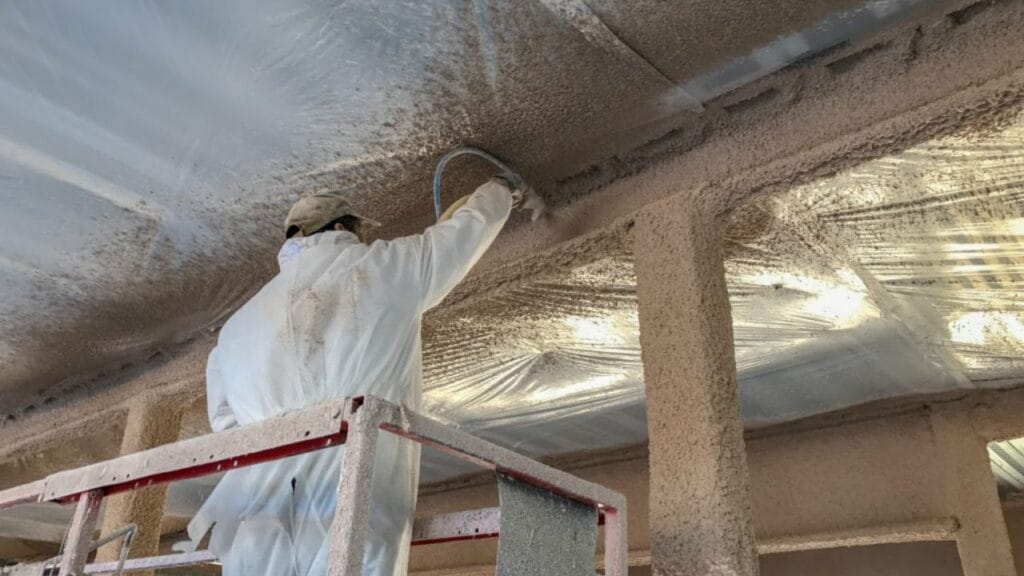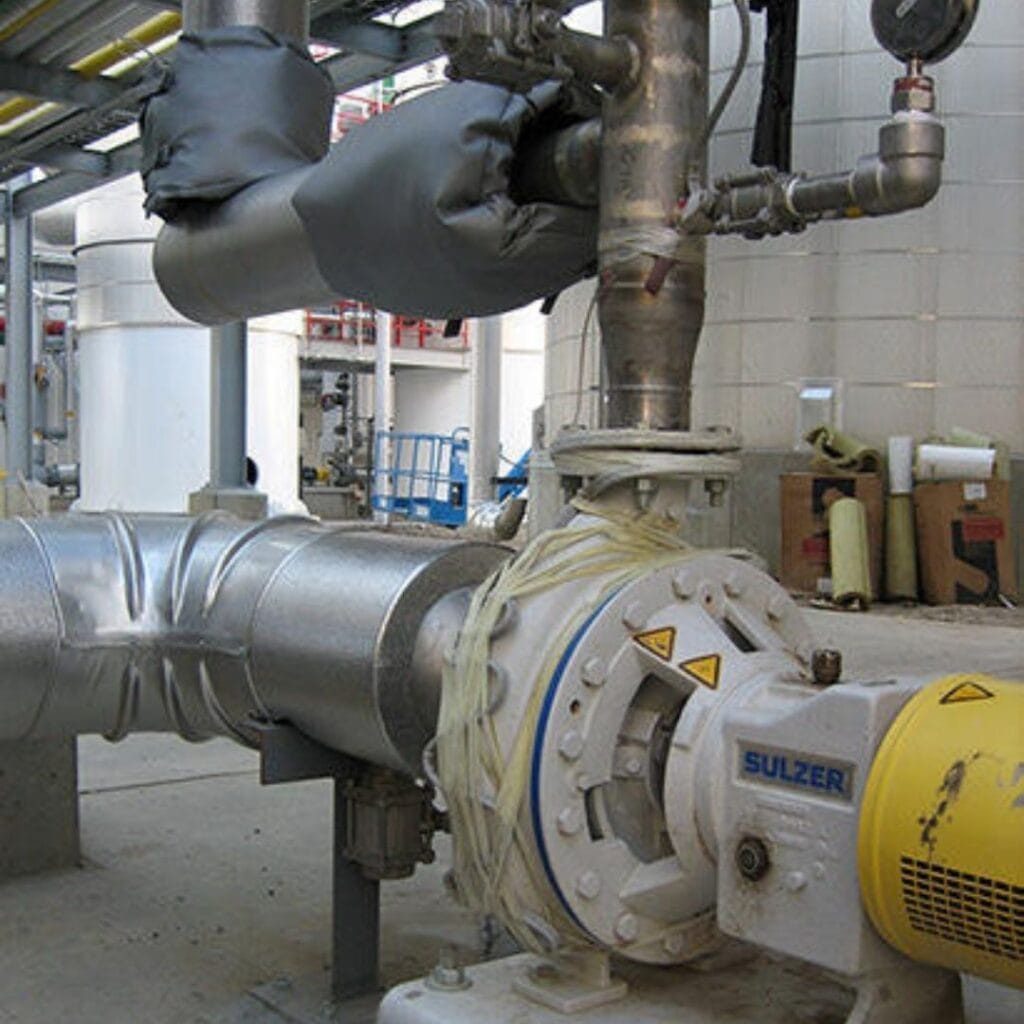Insulation Cost Estimators Guide for Fireproofing Estimating and Takeoffs
Insulation estimators before committing to fireproofing estimating and takeoffs should know which materials are needed for fireproofing of certain building materials and assemblies in residential, commercial, and industrial projects. Fireproofing and fire insulations are some of the most important steps while constructing a unit or a building. It requires a vast knowledge of insulating materials along with the techniques to apply that material for full effectiveness.

In order to make the building fire resistant to some extent, thermal insulation is explored for more options. Insulation cost estimators must have the required information in order to provide quantifiable insulation cost estimating.
The information is required for fireproofing cost estimating as well as the fire stopping cost estimating. Both of these require extensive knowledge and expertise. Before moving on to the technicalities and nuances, let’s establish the concept of fireproofing and fire stopping for better understanding.
Fireproofing
Fireproofing, use of fire-resistant materials in a building to prevent structural collapse and allow safe egress of occupants in case of fire. The fire-resistive ratings of various materials and constructions are established by laboratory tests and usually specified in terms of the hours a material or assembly can be expected to withstand exposure to fire.
Firestopping
Fire stopping is best defined as the sealing of any openings to prevent fire (including smoke and heat) from passing through multiple building compartments. The spread of a fire is contained by creating fire resisting compartments, which subdivide the building (vertically or horizontally). Buildings must ensure that any openings and gaps are fire stopped to restrict both lateral and vertical fire spread.
Purpose of Insulation
The main purpose of insulation is to limit the transfer of energy between the inside and outside of a system. A thermal insulator is a poor conductor of heat and has a low thermal conductivity. Insulation is used in buildings and in manufacturing processes to prevent heat loss or heat gain.
Insulation is used to maintain energy conservation while keeping the thermal resistance value to a standard of R-38. R-value refers to the thermal resistance “per unit area” where the desired energy is conserved. Different insulation materials have different R-values which decide the usability and effectiveness of the materials.
Various insulation materials like spray foam insulation, batt insulation, and cellulose insulation are used for the purpose of fire proofing whereas there is a range of multiple materials used for the whole insulation purposes.

The process of fireproofing is done while the site work is in progress. It is related to the architecture as well as the electrical work in the building. Electric trays carrying the bulk of wires need to be fireproof so that they may be protected in case of any hazard. Moreover, boilers and HVAC system in the commercial sectors need fireproofing as well. The whole process requires technical knowledge regarding the different types of insulations and caulking. Insulations and costs are discussed and the best options are decided upon when doing firestopping cost estimating.
Fireproofing and insulation not only require the in-depth knowledge of techniques and materials to be used, it also requires the fireproofing contractors and inspectors to have clear fireproofing estimating.
The Insulation estimator should have presumably knowledge for fireproofing estimating, of reading the plans, and fully equipped with the technical specifications of where and how fireproofing and insulation are applied for specific purposes.
Fireproofing Materials
Fireproofing Materials
The excellent fire protection afforded by concrete has been demonstrated time and time again over 90 years of experience in the petrochemical industry. The high mass and low thermal conductivity of concrete make it very effective at reducing heat input to the underlying structure. Poured-in-place concrete, using forms, is common for columns and beams. Gunite is pneumatically applied to spheres and other structures where the use of forms for poured-in-place concrete is impractical. The principal drawback with gunite application is that it can be very messy.
Post-fire inspections have shown that concrete spalls to various degrees but the general conclusion is that concrete/gunite performs satisfactorily with the steel structures well protected. Wire reinforcement is commonly used. Reinforcement does not prevent cracking and spalling of the concrete but it does minimize the loss of fractured material during a fire exposure.
Types of Fireproofing
As we have enlisted the areas and components that require fireproofing, the types of insulating material must be discussed in detail in order to have a better understanding of fireproofing. There are many competent brands that provide quality material for insulation. These include; ISOLATEK, Carboline which deals majorly in industrial fireproofing, Rockwool, BASF, and DuraSystems barriers, Inc. Others include Holdrite, 3M, and Cemco.
-
Spray Fireproofing
Technically, this type is known as Sprayed Fire Resistive Material or SFRM. This type of fireproofing controls condensation. The composition of SFRMs consists of cement or gypsum and often contains minerals like quartz and perlite. Cement or gypsum is used due to its property of getting hard after drying. However, modern formulas do not contain asbestos and hence do not pose a threat to health.
-
Fiberglass
The composition of fiberglass, as the name predicts, consists of fibers made from glass. These are then combined with plastic polymers. This makes this type of insulation naturally fire-resistant. Different industrial sectors use fiberglass because of this intrinsic property and combine it with batt insulation. Batt, however, requires careful evaluation.
-
Mineral Wool
The composition of mineral wool consists of recycled iron and steel byproducts. Actual mineral rocks are also used. This makes the material fire-resistant. This makes it a great fit for use in various industries and various equipment like HVAC ducts and control panels.
-
Cementitious foam insulation
It is cement-based insulation that has an R-value similar to that of fiberglass. It is applied in the form of spray foam and is nonflammable. It is used for insulating pipes and wiring. It is different from concrete and is not very good for application in open cavities. Procreate is cementitious insulation that provide hydrocarbon and cellulosic fire protection for structural steel. Fendolite and interkote are also the types of cementitious based foam insulations that provide jet fire resistance.
-
Cellulose insulation
The cellulose is composed of foam materials, which are non-combustible to a higher extent. However, fire-resistant chemicals are added to cellulose insulation in order to enhance its capacity of withstanding the higher temperatures. This is mainly used in walls and roof cavities. Different types of cellulose are used for the purpose that includes dry cellulose, as well as spray, applied cellulose.
-
Guniting
It is the process of applying a mixture of mortar or concrete on a surface. It is also known as shotcrete. Since it uses cement or mortar, it makes a non-combustible surface and is good for insulating. Valves and pipes are insulated through this process.
-
Asbestos Fireproofing
This type of insulation is commonly used in old houses or buildings for hot water piping insulation and furnace insulation. Asbestos is quite dangerous to be used in insulation and poses great threats. It is composed of silicate materials which are known to be expanding in case of fire. This type of fire prevention was used in the textile industry and construction. But the practice has now been updated due to the health risk involved.
-
Intumescent Fireproofing
Epoxy, Acrylic, Primer, Epoxy, Tie-Coats, Polyurethane, Seal Coat, Vinyl Esters are all the types of intumescent fireproofing. Intumescent coatings are mainly used for fire resistance of steel structures. These are great in terms of expansion as they will expand up to 100 times the thickness of the structure when exposed to high temperatures. This is applied as a paint. Layers upon layers are added which increases the overall thickness of the product. These are also great for wooden structures. Many of these products are used in caulking and fire stopping. As these are great at filling the cavities and hence air sealing is achieved through this.
-
Welding Blanket
Welding blanket is the type of insulation used in the welding process. It is designed to protect the welder as well as the equipment. It is composed of vermiculite and inorganic fibrous material. It is also made of leather, which is naturally fire resistant. Fireproof takeoffs consist of these various types of insulations and are done keeping in view the utility of the respective type.
-
Metal Foam insulation (Open cell foam, Close Cell Foam)
This type of insulation consists of metals which are porous and contain large fractions of gas. These pores can be sealed, commonly known as close cell foam. Alternatively, they can form an interconnected network known as open-cell foam. Due to its porosity which is linked with its density, it can penetrate the higher temperatures and hence can prove to be quite effective when used for insulation.
We have listed all the important information that you are going to need in order to understand fireproofing and fire stopping. Thermal insulation is required to be done in every field and particular knowledge is required for doing so. Fireproof takeoffs and fire-stopping estimating are of immense importance and insulation estimators and contractors work accordingly. This is everything that the fireproofing contractors and fire protection engineers need to know about the fireproofing and insulation estimating and fireproofing estimating.

